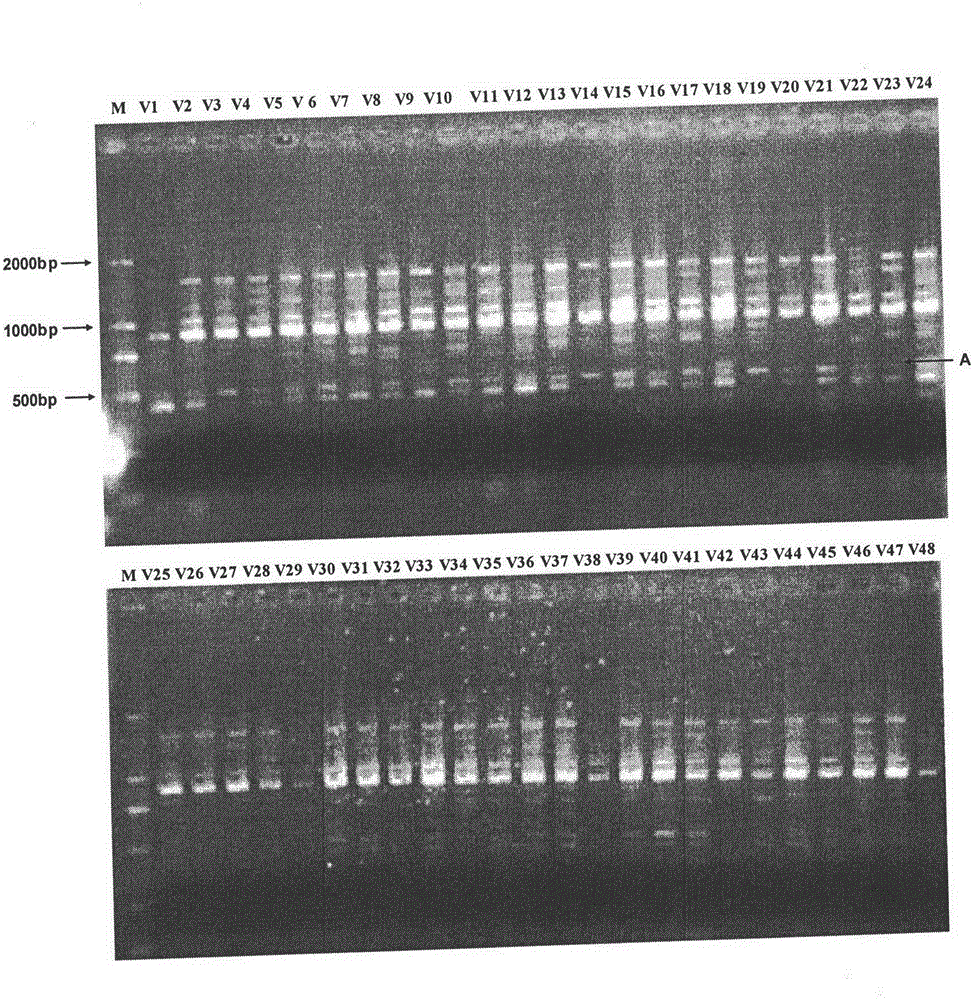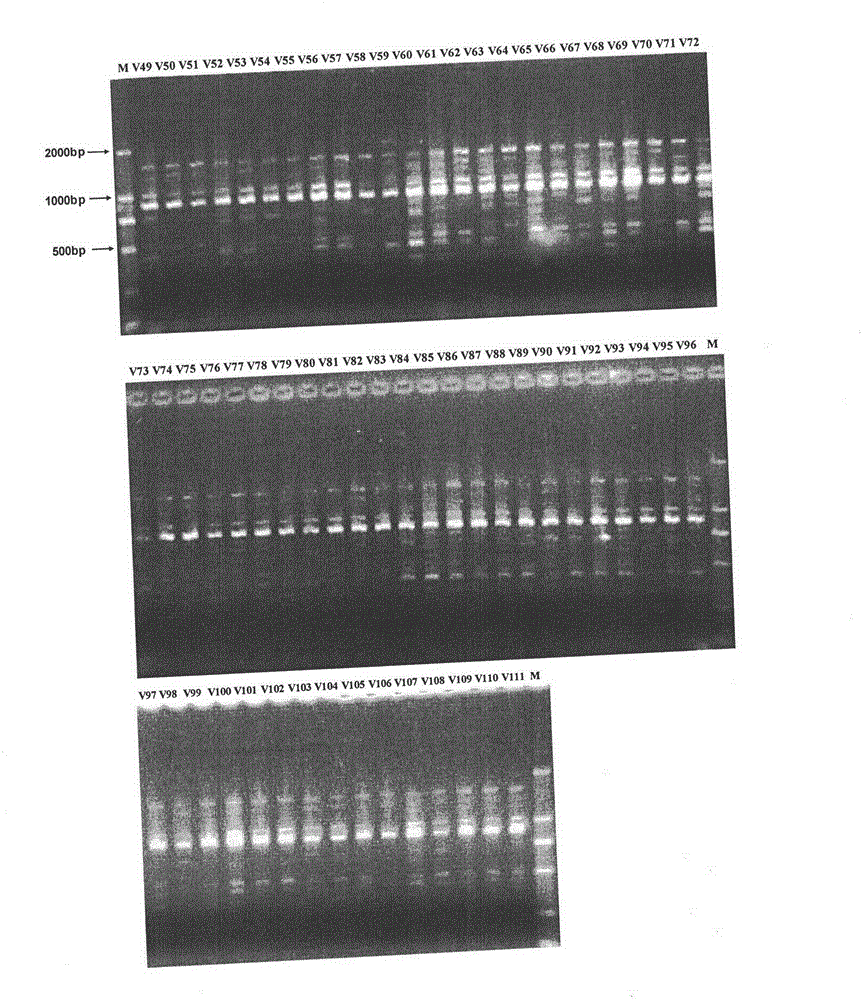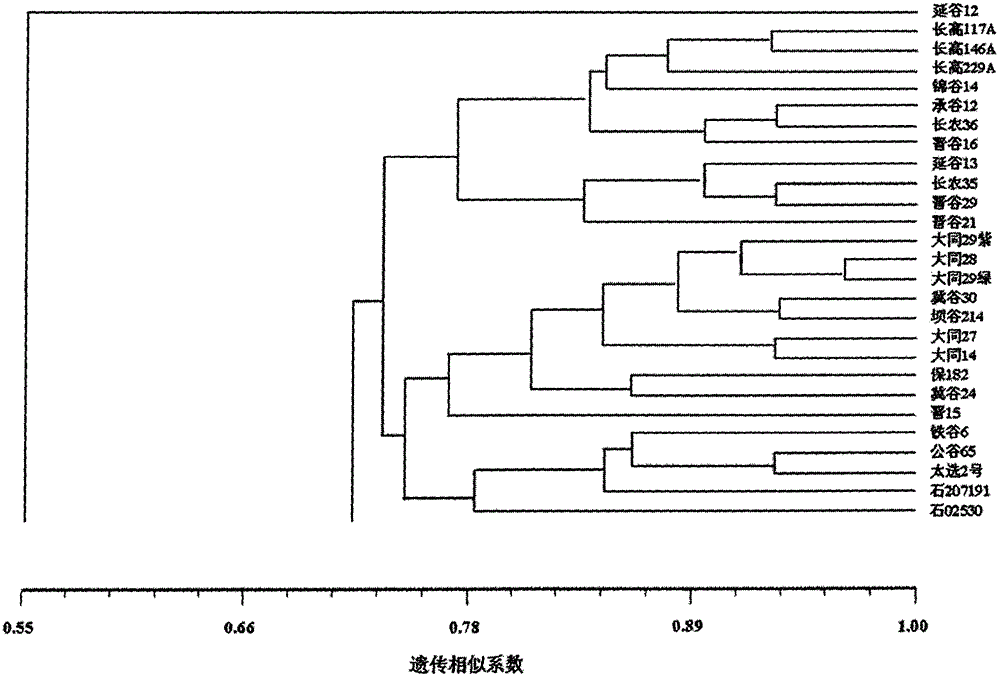Cytoplasm type dividing method of millet breeding materials
A cytoplasmic and millet technology, applied in the field of crop variety classification research, can solve the problems of failing to draw the consistency between genetic groups and ecological types, unable to determine the genetic similarity coefficient, unable to obtain the results of genetic evolution research, etc.
- Summary
- Abstract
- Description
- Claims
- Application Information
AI Technical Summary
Problems solved by technology
Method used
Image
Examples
Embodiment 1
[0036] Example 1: Division of Cytoplasmic Types of Millet Breeding Materials
[0037] (1) Construction of phylogenetic tree of cytoplasmic origin
[0038] ①Cultivation and acquisition of leaf tissue: The seeds of 111 millet breeding materials (see Table 1) such as Yangu 12 and Changgao 117A were planted in seedling trays to obtain millet seedlings, and the seeds of the breeding materials were cut at the 4-leaf stage. leaf tissue;
[0039] ②Extraction of whole-genome DNA: using CTAB method to extract whole-genome DNA in leaf tissue in step ①;
[0040] ③PCR amplification: Using 20μl reaction system, using 23 pairs of mitochondria-specific primers in Table 2 synthesized by Sangon Bioengineering Shanghai Co., Ltd., through 37 reaction cycles, PCR amplification was performed on the genomic DNA extracted in step ②. The 20μl reaction system includes Taq enzyme (5U / μL) 0.2μL, 10×buffer 2.0μL, dNTP (2.0mM) 2.0μL, FPrime 1.0μL, RPrimer 1.0ML, DNA 2.0μL, ddH2O 11.8μL. A total of 37 cy...
PUM
 Login to View More
Login to View More Abstract
Description
Claims
Application Information
 Login to View More
Login to View More - R&D
- Intellectual Property
- Life Sciences
- Materials
- Tech Scout
- Unparalleled Data Quality
- Higher Quality Content
- 60% Fewer Hallucinations
Browse by: Latest US Patents, China's latest patents, Technical Efficacy Thesaurus, Application Domain, Technology Topic, Popular Technical Reports.
© 2025 PatSnap. All rights reserved.Legal|Privacy policy|Modern Slavery Act Transparency Statement|Sitemap|About US| Contact US: help@patsnap.com



